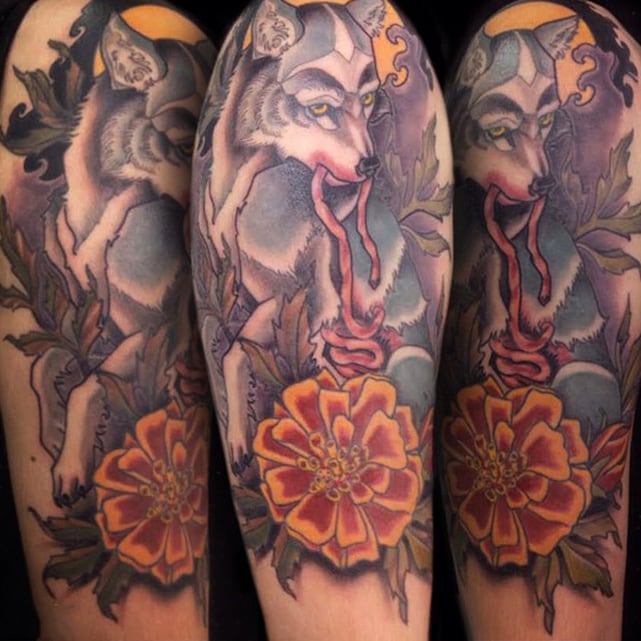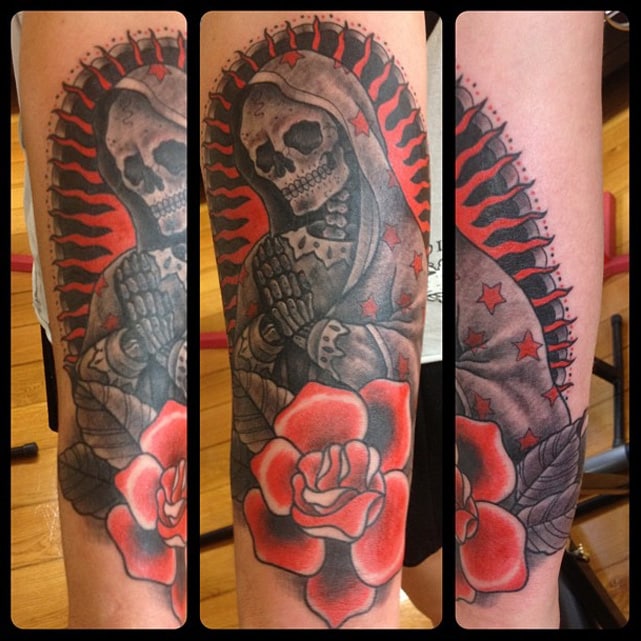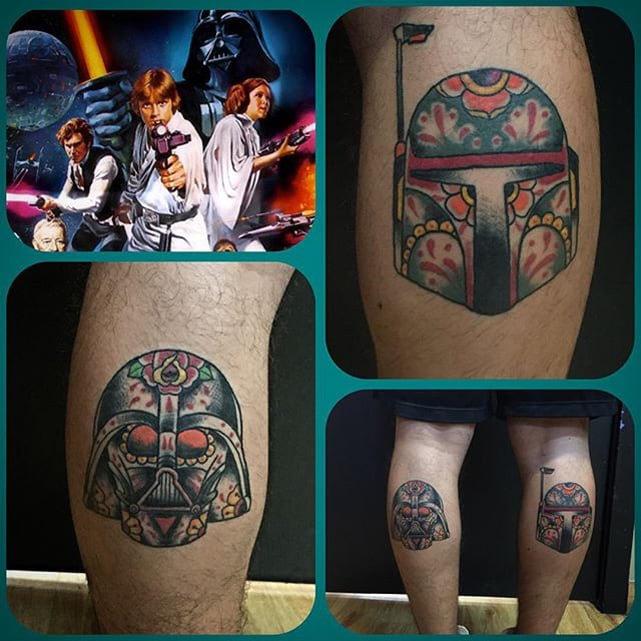STYLE. GROOMING. INSPIRATION. ADVICE.
STYLE ADVICE
Day Of The Dead Tattoos
By Will Morley, 31 October 2015
Of all our yearly celebrations (or excuses for a knees-up), Halloween is definitely the coolest, but over in Mexico, they up the ante even more with a three-day fiesta from 31 October until 2 November that honours the deceased and pays homage to all things creepy and kooky, mysterious and spooky, and altogether ooky, culminating in Día De Muertos or the Day of the Dead.

Picture: Capital Pictures
Traditionally, families make altars or ofrendas: little shrines stacked with food and gifts to appease spirits of relatives who have passed away, to keep them onside should they be tempted to come back for some ghostly japes. The dope folk-art imagery seen throughout the festival is a mix of iconic religious and deathly designs, and has proven tempting to tattooists the world over, inspiring them to ink some seriously eye-catching works that can only be described as dead good. So dust off that vinyl copy of Mariachi El Bronx’s first album (or fire it up on your phone) and get ready for some hellaciously inked heat.

Picture: Instagram.com/tattoo_4ever
Sugar skulls
As a symbol of the afterlife, there’s nothing more recognisable than a skull and you’ll find them everywhere during Day of the Dead. But rather than just plain ol’ white bone they're made more party-appropriate, coming decorated with colourful designs and flowers, often positioned in a ghoulish grin. Traditionally edible skulls crafted from sugar were made not only as gifts to the spirits but also given to kids to eat. The ease of customisation, from outlandish to straight-up traditional, ensures their popularity with people looking to grab a tattoo, whether they’re celebrating the dead or just their own sense of style.

Picture: Instagram.com/carinaalok
Marigolds
In Mexico the marigold flower symbolises death and is used to decorate skulls and altars, and is sometimes worn in the hair. It’s said that their strong fragrance can lead the dead back from the spirit world (much like the effect of walking past a Nando’s). The petals are often sprinkled leading to the door of shrines so that any supernatural visitors can find the way back out again. While this tattoo may not strictly speaking be a direct Day of the Dead design (a wolf eating its own guts, WTF?), the use of the marigold with all its grave connotations shows that the tattooist knows her stuff.

Picture: Instagram.com/filgueirasrosane
La Calavera Catrina
The elegant skeleton or La Calavera Catrina, while not particularly old (it first came to prominence in the early 20th century) has quickly become the figurehead of the Day of the Dead. Initially a skeleton in a fancy hat, the idea has since morphed into a mega-babe painted up like a skelebob. While it may seem particularly modern to mix sexy times with the dead, Mexico’s ancient beliefs (we’re talking Aztec times) had a very open, easy relationship with the afterlife in their popular culture, paying homage to it with songs and humour.

Picture: Instagram.com/lustforlifetattoo_brisbane
Candles
Mexican candles, or veladoras, are pretty much the same as Catholic votive candles brought over by the Spanish and usually feature intricate designs of saints. One of the most popular pictures features an image of Our Lady of Guadalupe (AKA the Virgin Mary). During Día de Muertos, candles are employed – much like the marigold – to guide back the dead from the afterlife. The contemporary melding of pop culture and religion means nothing is off bounds, including a Lady Of Guadalupe as death itself.

Picture: Instagram.com/amoxill
Appropriation
Stateside, the Day of the Dead is better known than in the UK and various fashion subcultures have long embraced it, particularly those participating in Kustom Kulture (old-school hot-rod fans) and the psychobilly movement. Whether you’re grabbing a tattoo to honour Mexico’s history or you just like the intricate traditional patterns, people are always going to be intrigued and ask questions. In the end, the spread of information on the culture of Día de Muertos can only be a good thing, especially if that’s via a dope-as-hell Boba Fett helmet.
